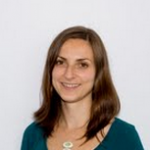
Rebecca Teigland
Independent Artist
Biography
Rebecca is a Bergen-based artist working predominantly within the field of Printmaking and Ceramics. Photography is often used as the main basis for her work where pattern, colour and the use of light are important elements.
With a deep interest of the human condition and the everydayness, Rebecca’s work is mainly about what we as people are surrounded by in our everyday lives. The traces of human existence that are left behind in architecture and objects, and the way we link personality and memory to objects and places is also a great fascination of hers.
Travelling and studying other cultures is a huge source of inspiration and often a very important factor in the development of her work.
Rebecca finished her MA in Multi-Disciplinary Printmaking at the University of the West of England in 2011. In her final project she worked with fossilizing ephemeral moments using porcelain, photography, laser etching, Arduino technology and movement sensors to control light and make her work more interactive. For this innovative mix of printmaking and new technology she was awarded with the Cliff Moss Prize for significant technical achievement/work distinguished
Open Book
Ephemeral Moments in Porcelain
The work presented is a selection from her MA final show in 2011. The initial idea was to fossilize ephemeral moments using porcelain and photography. The material was chosen for its’ durability, although it can brake it will not deteriorate. A plaster mould was made from a box canvas and then used to cast new canvases made from porcelain slip. This make them easy to mistake for real canvases once they’re up on the wall, which often appeals to the viewers urge to touch them once they find out what material they are made of. The technique of laser etching burns the image into the porcelain creating a fossil. The work is very subtle and almost a bit shy, but the images are easily recognisable and this invites the viewer into the work.
The Porcelain book is made from sheets of porcelain paper clay that have been rolled out to very thin slabs. They have then been coated with liquid photographic emulsion and developed in the dark room with the same chemical wet process as you would with photographic paper. The felt sheets in the book both protects the porcelain sheets from hitting against each other when you turn the pages, but also creates a window which works as a small teaser for the image on the next page. The sheets were then bound together by tying thread using a special book binding technique.
